A couple of days ago, shoppers at the Westfield Mall in Paramus, NJ got treated to an unexpected shower of cash from Fetty Wap. While out with his daughter, the rapper of the year tossed more than $2,000 in cash over a balcony, and shoppers screamed in delight as they scooped up the bills. How ironic that as Fetty Wap is showering us with cash, Janet Yellen and her Posse are preparing to raise short term interest rates, bringing an end to 7 years of extraordinarily easy monetary policy. A sort of Feddy Wrap, if you will.
The market appears to be well prepared at this point for that first rate hike, and it will probably pass with very little fanfare. But over time, as the Fed slowly turns off the spigot, there will surely be an impact. The problem is, even in the best of times, both the magnitude and timing of the impact from changes in monetary policy are very difficult to predict. We have never had such an extended period of zero interest rates, so assessing how changes in policy will play out seems a like a crap shoot. While we have seen significant recovery in asset prices, growth in the real economy has remained fairly anemic. Seven years of zero interest rates and $3.7 trillion of asset purchases have failed to have a significant impact on growth. The money multiplier has not exactly been boomin’, and Yellen is in real danger of becoming the liquidity trap queen.
Not everyone agrees that we’re in a liquidity trap, of course, but it seems pretty clear that the monetary transmission mechanism is not as effective as it has been in the past, or as we would have liked. We’ve been poised for “lift-off” several times now, and both inflation and growth expectations have continued to surprise on the downside. So when Yellen talks about moving slowly with interest rate hikes, I think we had better take her at her word. This will not be a Greenspan / Bernanke cycle, with regular 25 basis point moves. The minutes from the last FOMC meeting began with the committee’s discussion on equilibrium real interest rates, which likely fell to negative levels during the 2008-9 recession, and are even now close to zero. Equilibrium short-term rates should rise, but only gradually. The falling unemployment rate suggests that what feels like anemic growth probably actually exceeded potential GDP.
That is a heck of a message. Real GDP growth at 2.5% is running ahead of the growth in potential GDP. Equilibrium rates are close to zero. Inflation expectations have declined significantly (as measured by TIPs Breakevens), and this in what looks like the later stages of the expansion – just when we should be worrying about higher inflation. Forget the dot plot, I would focus on the gradual. It feels to me like we aren’t going anywhere, and we better settle in for some liquidity trap luv. Rate hike potential of about 50 basis points over the next year might be all we get, not the 125 or so that futures are pricing in.
There are those who will likely never part with their Fetty Wap cash. There are also some who will save it, and others who went straight to Shake Shack. The choices are always the same. Save it, spend it, hoard it. Whether we realize potential growth may be a function of the latter. And how many hoarders are out there? I wonder….





